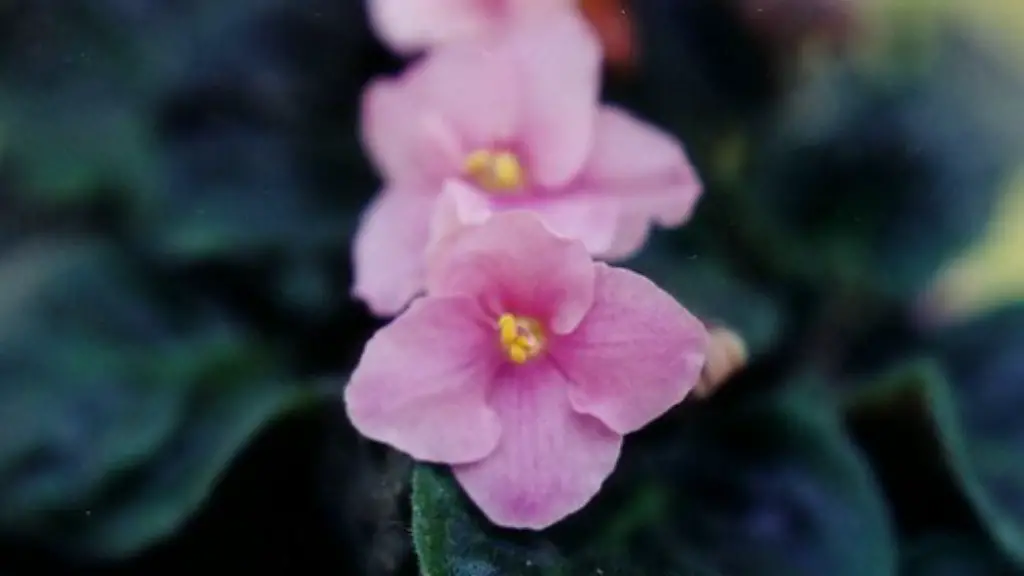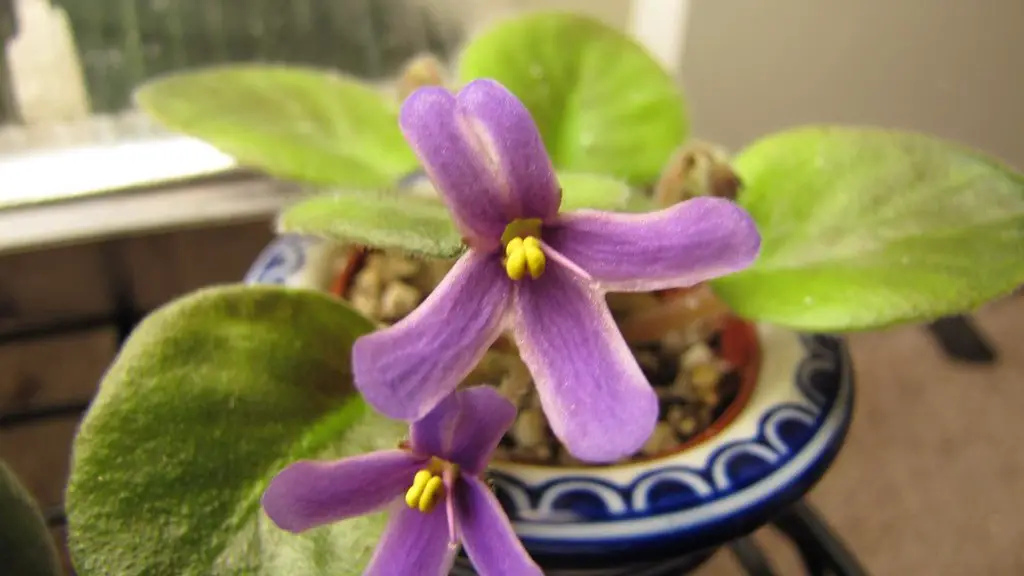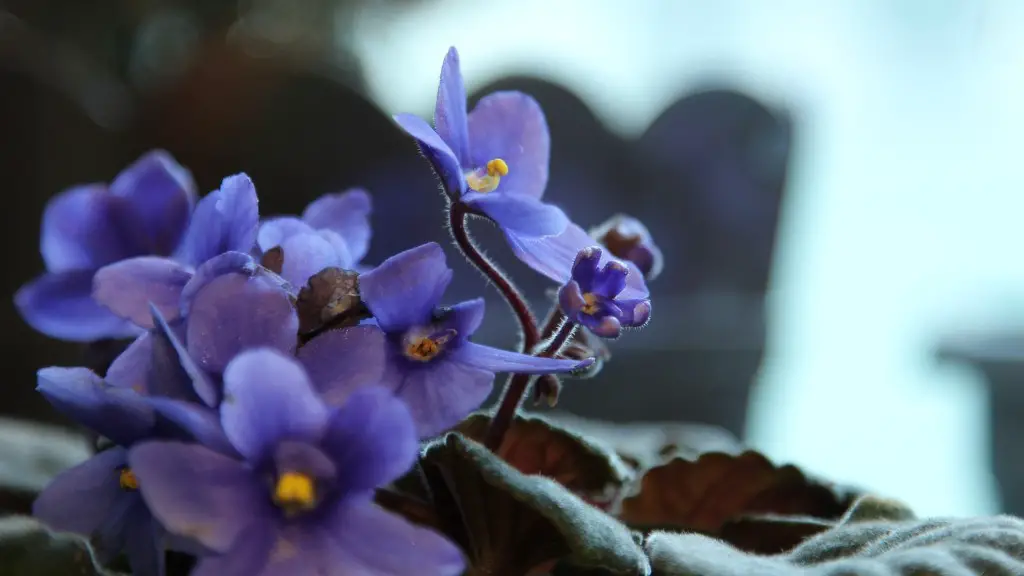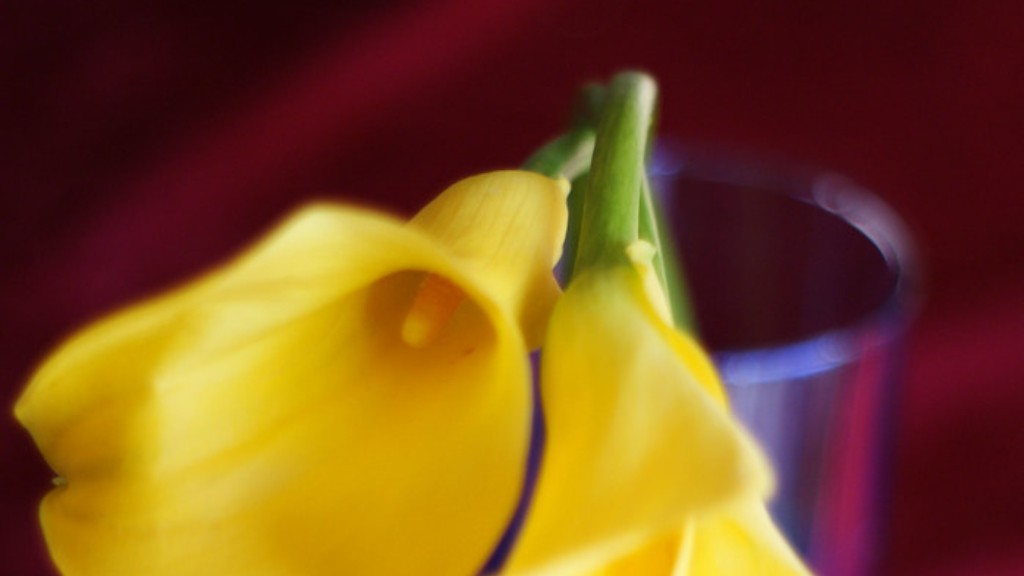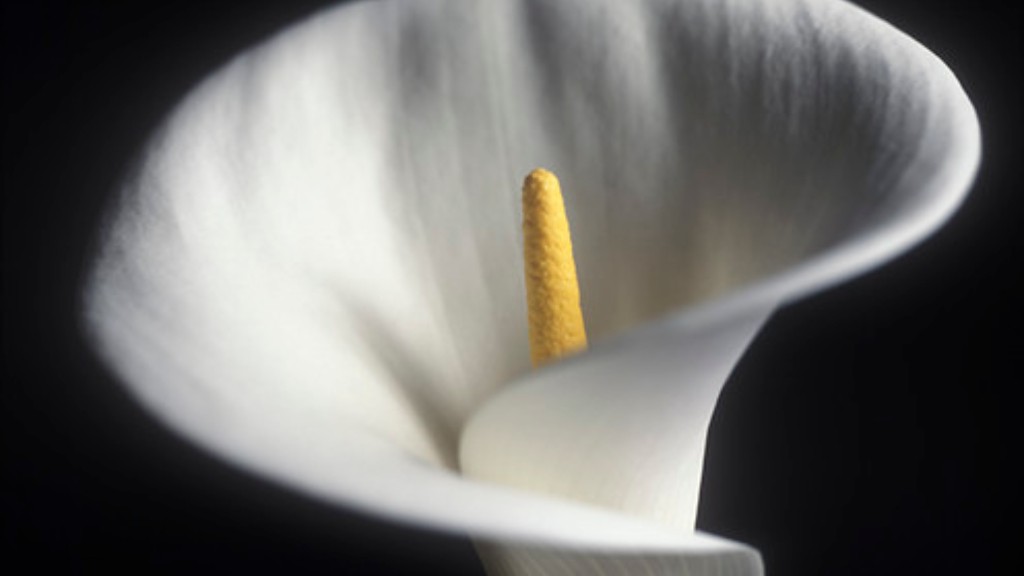Indoor African violets need bright light and moderate humidity, but cannot tolerate drafts. They like to be kept moist, but not wet. WaterAfrican violets when the soil feels dry to the touch.
Once a week, water African violets until the soil is moist but not soggy. letting the soil dry out between waterings is better than overwatering.
Should African violets be watered from the top or bottom?
African violets are a beautiful and popular houseplant. They are relatively easy to care for, and can be watered from the top or bottom. It is important to use lukewarm or warm water, as cold water can shock the plant and cause leaf spots. If you water from the top, be careful not to get water on the leaves when the plant is in the sun, as this can cause leaf spots.
Knowing when to water your African Violet is pretty straightforward. Take your finger and lightly push down into the soil. If the mix feels bone dry, it’s time to water. If the mix feels moist, let your African Violet sit and check back in a few days.
What is the proper way to water African violets
Watering your plants is very important to keeping them healthy and encouraging blooming. Make sure to keep the soil moist to dry, and allow the soil around the roots to dry out before watering again. The best way to water your plants is from the bottom, using room temperature water. Place the plastic grower’s pot in water, and allow the plant to absorb the water for no more than 30 minutes.
When watering your African violet, be sure not to mist the foliage as this can cause permanent leaf spotting. Use room temperature water and water the plant at the base, being careful not to saturate the crown as this can lead to crown rot.
Is tap water okay for African violets?
It is important to be aware of the quality of your tap water when growing African violets. Chlorine levels can fluctuate depending on the season and in some areas tap water may have high levels of chlorine, chloramines, or dissolved solids. These things can adversely affect your African violets. If you are concerned about the quality of your tap water, you can use distilled water or water that has been filtered to remove impurities.
To clean African Violet leaves, fill a spray bottle with room temperature or tepid water. Spray the leaves with water and clean the leaves using your fingers, rubbing the top and bottom part of the leaves. You can also use the spray bottle method to clean the African Violet leaves with liquid soap.
Where is the best place to put an African Violet?
If you want your plants to be healthy and have vibrant colors and blooms, then you should place them in an area with bright, indirect light. A plant stand three feet away from a west- or south-facing window is an ideal location. Plants will still grow when situated right beside north- or east-facing windows, but leaves will be thin and spindly, and plants less likely to bloom.
If you have overwatered your African Violet plant, you will need to take immediate action to save the plant. The first thing you should do is discontinue watering the plant and allow the soil to dry out completely. Once the soil is dry, you can then assess the damage and see if the plant can be saved. If the leaves and/or leaf stems are soft, limp or mushy, then the plant is most likely beyond saving and you should dispose of it.
Do African violets have to be watered from the bottom
If you’re growing African violets, you may want to consider using a top-watering can. This can help you control the stream of water more easily, and it also helps to keep your plant dry. Just be sure to poke the nozzle beneath the leaves to wet your soil.
Grow Tip: Remember that bottom watering can sometimes cause fertilizer salts to build up in your plant’s soil.
It is important to keep the roots of African Violets moist, but never soggy. Watering from the bottom so that the roots can soak up the water over an hour or so will help to keep water out of the crown of the plant. African Violets like warmer water, around 70 degrees.
How do you encourage African violets to bloom?
African violets need indirect sunlight to bloom. The most common reason they don’t bloom is because they aren’t getting enough light. Choose a north- or east- facing window for best results. Keep plants away from cold glass and rotate the pot once a week so all leaves receive light.
If you want your African Violet to stay healthy throughout the year, you need to fertilize it. During the spring and summer, you should fertilize your African Violet once every 14 days. In the fall and winter, you shouldn’t fertilize the plant at all to prevent over-fertilizing.
How long do African violets live indoors
African violets should be repotted every two to three years to ensure they have the proper amount of space to grow. This also allows for fresh potting soil, which will provide the plants with the nutrients they need to thrive.
African Violet roots don’t go very deep; they like to go sideways, so don’t use a deep pot. Your pot must have suitable drainage holes so you can water from underneath. You can also get African Violet specific pots that have a terra cotta sleeve you plant in, and a water reservoir.
How much water do you give African violets?
Wicking systems are an excellent way to make sure your African violets are never over watered. By only watering once a week and allowing the plant to completely dry between waterings, you can ensure that your plants stay healthy and vibrant.
Coffee grounds are filled with nutrients that can help African violets grow healthy foliage. Nitrogen is one of the key nutrients that helps plants grow, and coffee grounds are a great source of it. Coffee grounds are also slightly acidic, which can help to create the ideal growing conditions for African violets. If you’re looking for a way to give your plants a little boost, try sprinkling some used coffee grounds on top of their potting soil.
Conclusion
It is best to water African violets when the soil is dry to the touch. Indoor plants should be watered about once a week.
Overwatering is the leading cause of death for African violets, so it is important to make sure you are not watering them too often. The best way to determine how often to water your African violets is to stick your finger in the potting mix up to the first knuckle. If the mix is dry, it is time to water. If the mix is still damp, wait another day or two before watering.
